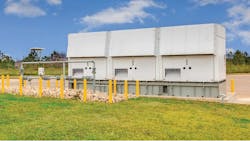Going Beyond Compliance: When Compliance Alone is Not Enough
In other examples, the minimum regulation represents minimum compliance. While exceeding compliance may be possible, it can cost more to do so. Sometimes, however, going beyond compliance is both the responsible thing to do and can save money. For data center operators that have made commitments to social responsibility or sustainability and carbon reductions, such an option exists right now.
Almost all data centers rely on backup diesel generators to provide electricity when utility power is not available. This equipment has not changed much in the last 20 years. Large diesel reciprocating engine gensets start quickly and handle the rigorous technical needs of a data center. But the local pollution levels allowed by the most common Environmental Protection Agency (EPA) Tier2 and more stringent Tier4 generator regulations are so high that the generator is only allowed to run during emergencies and for very limited testing and non-emergency hours. EPA studies have shown that these local emissions are the cause of higher rates of asthma and other lung ailments.
Why do data centers settle for compliance when a much cleaner option is now available that can save them money too? Clean microgrids, like those provided by Enchanted Rock, are an alternative to diesel backup generators, and can materially reduce local emissions by between 20 and 1,000 times, reducing or even eliminating the carbon footprint of backup power with the use of renewable fuels.
Because they are so clean, they can also be used to support the broader power grid, which has become challenged by the growing share of renewable energy, like wind and solar power. These grid support services can also, therefore, generate significant revenues from what is normally an idle asset class, reducing the net cost of the backup generating plant to below the cost of diesel options.
Need more reasons? Microgrids can reduce regulatory permitting obstacles and generate net revenue streams ranging from $50,000 to $150,000 per MW-year, or add up to $10 million per year of increased margin for a large data center.
Sometimes going beyond compliance can yield surprising benefits for society and the company itself. The air quality benefits to local communities are reason alone, but data center operators can also support the community, meet climate goals, and save money.
I love it when a plan comes together!
Allan Schurr is CCO of Enchanted Rock. Contact them to learn more about their clean microgrid solutions for data centers.


